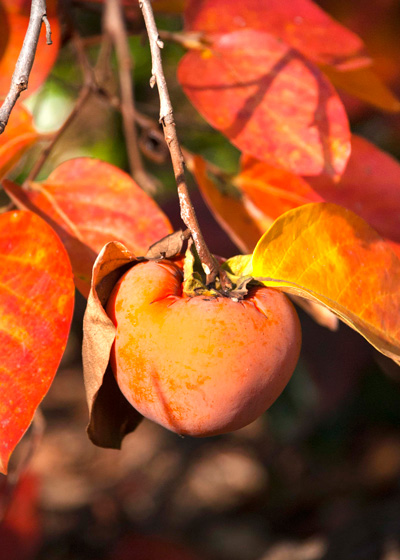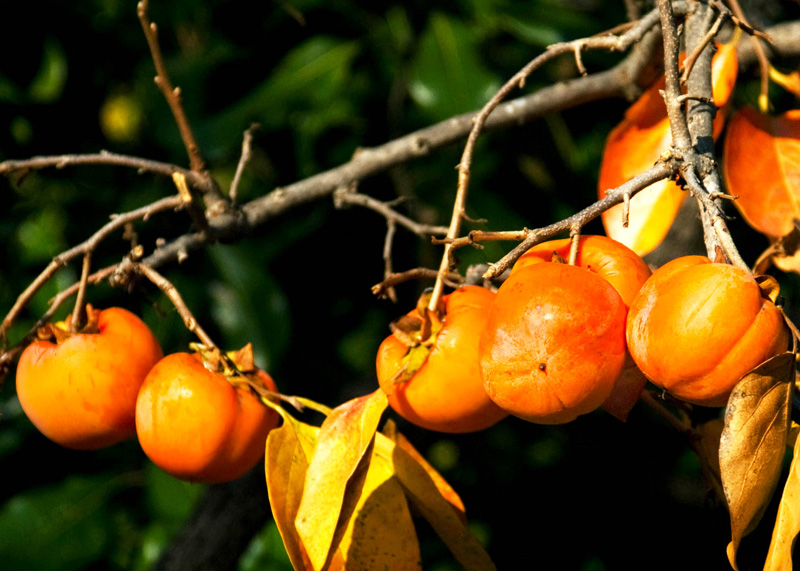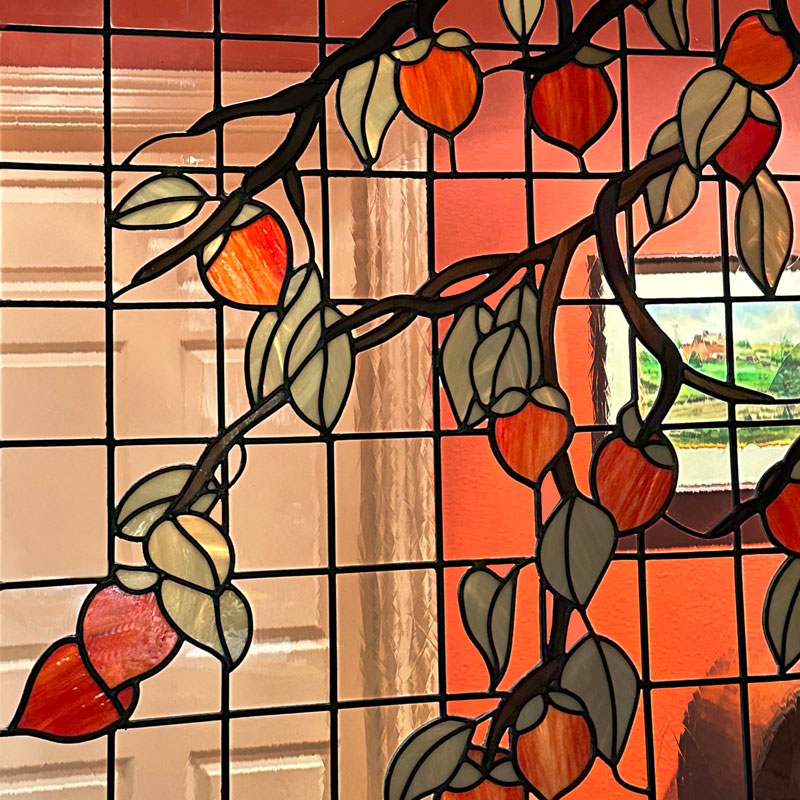Persimmons serve two purposes
It’s nice when you find a plant than can handle two tasks. Such it is with persimmons. Obviously, they produce edible fruit, but they’re also lovely small landscaping trees.

Our native American persimmon Diospyros virginiana grows wild across the South and west into Central Texas. It’s not uncommon to find it in groves of trees 30 to 35 ft. tall. Its trunks are heavily fissured and easily recognized. Its leaves are comparatively small as are its fruit. The fruit ripens after the first freeze, and even then, it can still be quite astringent. Enough that they make many folks timid about trying a second bite years later.
So, we move on to the more popular Oriental persimmon (Diospyros kaki). Most of these are smaller trees at maturity, most with larger leaves and all with significantly larger fruit. They’re from China and Japan where they’re popular fresh, dried, or cooked.
Buy Oriental persimmons bare-rooted in winter or in containers at any time of the year. For bare-rooted plantings, it’s best to buy early in the winter while variety selection is at its best.
Allow your persimmon trees 18 to 20 ft. in all directions. Set them at the same depth at which they’d been growing in the nursery, and make provisions to water them by hand for their first couple of years until they can become well established.
Prune bare-rooted trees back by half at the time of planting to compensate for roots lost in the digging. From that point on your goal should be to train most varieties into pyramid shapes with 3 to 5 main branches 1 ft. apart along the trunk with the lowest one being 3 ft. off the ground.
Remove dead and damaged branches each winter. Maintain open canopies in your trees. Persimmons develop on branches as they grow in the current season, so prune in a way that keeps these bearing shoots close to the main branches. Otherwise, your tree will droop from the weight of the fruit.
Water your persimmon during dry spells and especially during the spring as the fruit is developing. Apply a high-nitrogen fertilizer as growth begins in early spring, but do not promote excessive vegetative growth (more than 3 ft. of shoot growth per year).
Gardeners prefer seedless varieties, but they come with a warning. Seedless persimmons frequently drop during periods of any type of weather stress: heat, drought, excessive rains, etc. Fruit experts tell us that we need to expect that drop and that we can minimize it by mulching our plants and watering as needed. Otherwise, console yourself by knowing that fruit drop thins the overall crop, and that leads to better size and quality of those fruit that remain.
Tannins in the peels of persimmon fruits render them inedible until they are fully ripened. The variety ‘Fuyu’ is an exception. It is considerably less astringent. For all others, as long as raccoons, opossums, squirrels, and other animals will leave them alone, leave the fruit on the trees well into the winter.

Varieties…
There are several varieties of Oriental persimmons in the market today. Here are comments from fruit specialists at Texas A&M.
• ‘Eureka’ is considered the best commercial variety in Texas. It produces heavily, and its medium-sized fruit (generally seeded) is of high quality. The tree is small and self-fruitful (does not require a second tree of a different variety).
• ‘Hachiya’ is a vigorous, upright tree that produces large, seedless fruit. It is an excellent choice where an attractive landscape plant that produces fruit is desired.
• ‘Tane-nashi’ is vigorous and upright. Its fruit is seedless and orange, and it holds well on the tree. It’s an excellent landscape tree.
• ‘Tamopan’ has very large, orange fruit with recognizable constrictions near the middles of the fruit. It is the most vigorous and upright of varieties grown in Texas.
• ‘Fuyu’ is less winter-hardy than the other varieties and therefore is best suited to the southern half of the state. Medium-sized, self-fruitful. Non-astringent.
Looking for more information on persimmons? Here is the Texas A&M fact sheet on them.
From the Sperry home office…
I’ve always been fond of our native persimmons. Probably 40 years ago I wanted a piece of stained glass for a window in our home. I took several photos and even a small branch with fruit to a craftsman at the old Olla Podrida craft mall in Dallas (now gone but not forgotten). This is the beautiful piece he turned out. We took that window out, so I used it in a door to my office. That way I can love it every day.
Fun fact…
The genus of our edible persimmons is Diospyros. You are familiar with the wood from another tree from that genus. In fact, its timber is among the most valued wood in the world. Religious artifacts, parts of the world’s finest musical instruments, art carvings, and small pieces of the most collectible furniture have been made from it. Ebony.


